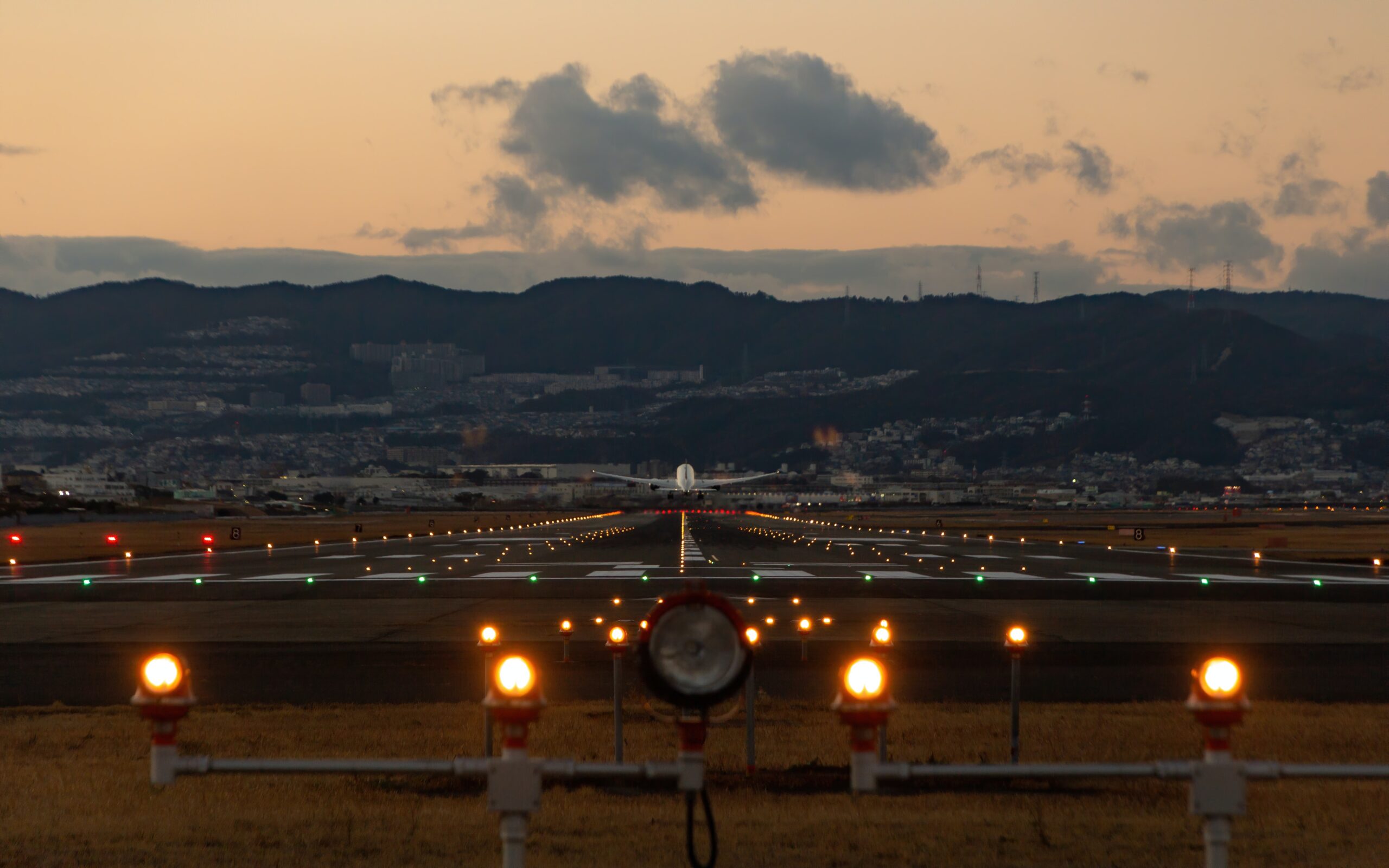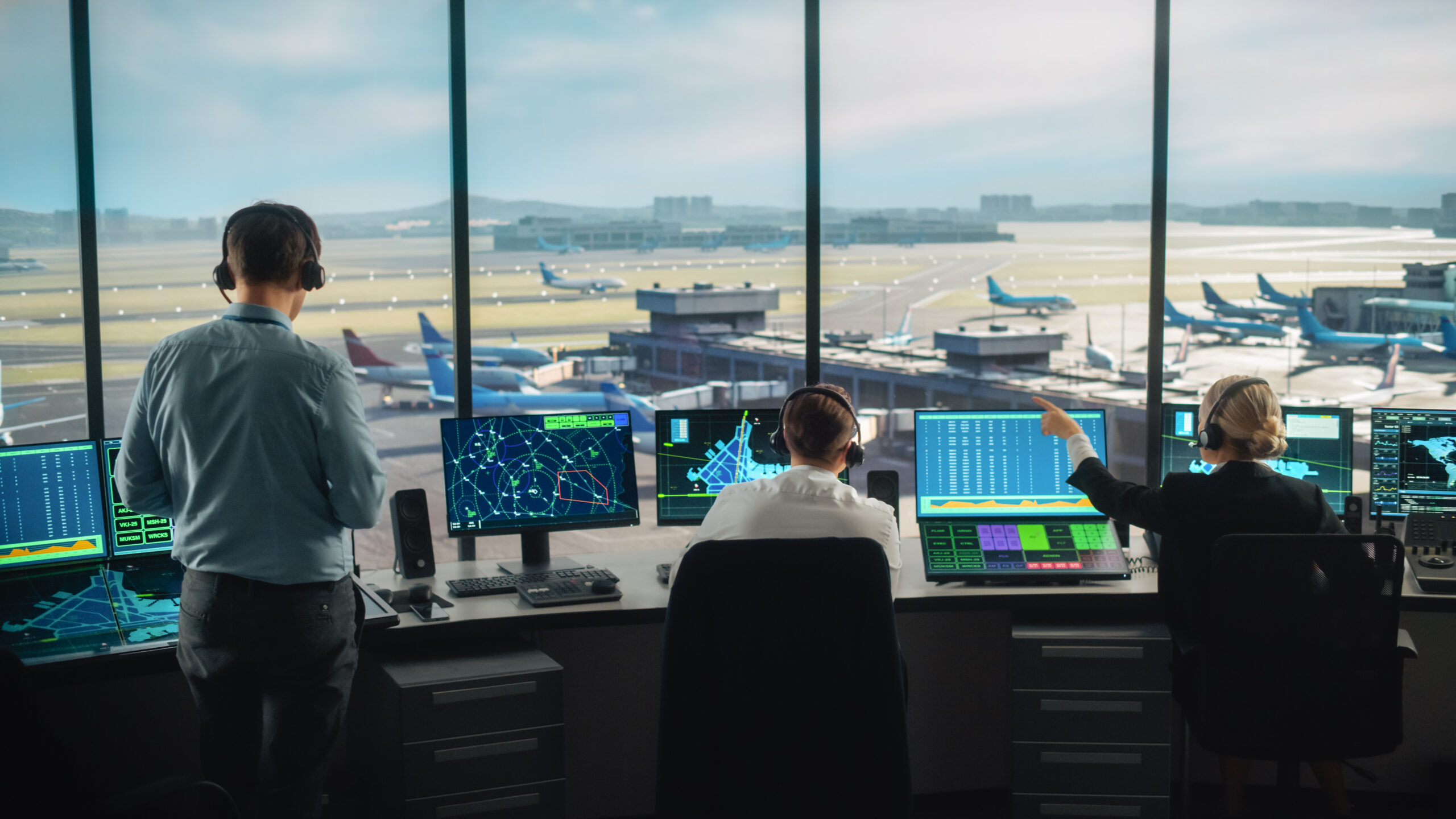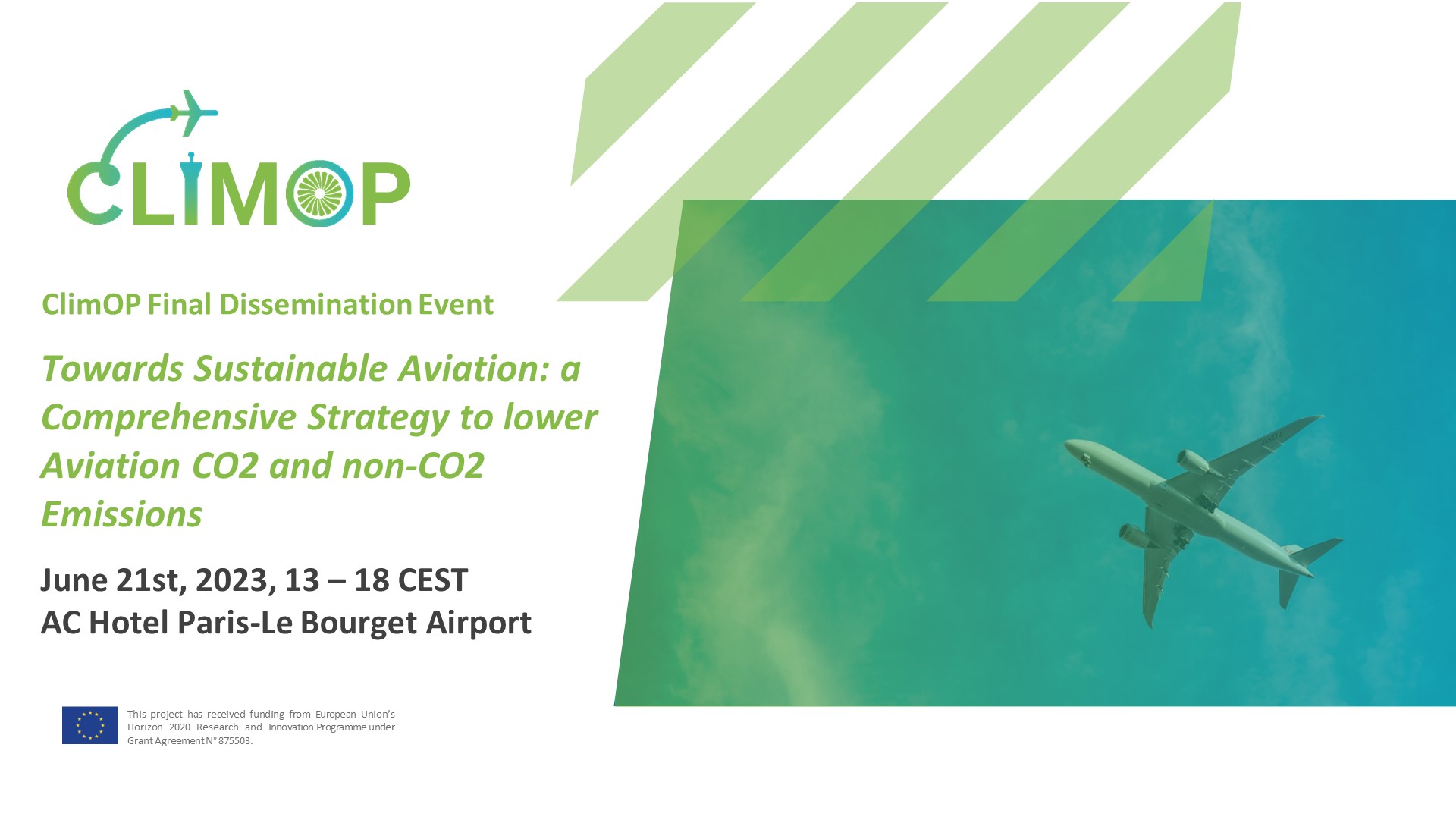During the 40th Session of the ICAO Assembly in 2019, it was highlighted that the synergic application of strategies including technological advancements, market-based measures, and operational improvements is necessary to achieve the aviation sustainability goals [1]. Computational models allow to explore the effectiveness of different operational improvements towards the reduction of aviation climate impact. In this post, we aim to give an insight into the opportunities and challenges faced when assessing sustainable operations. To this end, we focus on some of the suggested operational strategies, considering potential improvements to the cruise phase of the flights, airline network planning, and ground operations.
Adapting flight paths to climate-sensitive areas
Addressing the flight cruise phase, climate-optimized aircraft trajectories have been considered to reduce the climate impact of non-CO2 effects, such as the emission of nitrogen oxides (NOx) and water vapour, and the formation of persistent contrails. This climate mitigation strategy relies on the fact that the net climate impact of non-CO2 effects is highly dependent on the background atmospheric conditions at the time and location of the aircraft. Within the ClimOp project, the mitigation potential of climate-optimized aircraft trajectories has been explored using the Trajectory Optimization Module (TOM) to evaluate a case study on December 11, 2018 [2]. The climate impact of selected flights has been estimated using a set of prototype algorithmic Climate Change Functions, presented by Yin et al., 2022 [3]. These formulas, due to their low computational cost, are a suitable tool to evaluate and compare the aircraft climate impact under many different atmospheric conditions, thus they can be used to identify climate-optimized aircraft trajectories.
The analysis of this ClimOp case study confirmed that a significant reduction in the climate impact of specific flights can be achieved by limited changes in the flight path, causing low increases in fuel use and flight time [2]. However, the modelling chain employed in these experiments relies on various assumptions (e.g., on aircraft types, computation of engine emissions, and algorithms estimating the flight climate impact). These assumptions are necessary to make the simulations computationally efficient, but they represent sources of uncertainty in the results. For example, identifying the areas of the atmosphere where contrails form and persist (ice supersaturated regions) is sensitive to the temporal and spatial resolution of the available atmospheric data. Consequently, this determines the values of input threshold parameters. Thus, it is recommended that future research addresses these sources of uncertainties, aiming to better quantify and mitigate them.
On the other hand, climate optimised trajectories have different flight time and fuel use than business-as-usual trajectories. These changes may require airlines to adapt their network structure and flight schedule accordingly, to avoid poor operational and financial performance of airlines. Therefore, climate optimised trajectories should also be analysed from the airline point of view [2].
Enhancing operation management and planning
Airlines desire to increase revenue by optimising their operation plans and schedules, while dealing with a complex and dynamic environment. The origin of complexity is mostly centred on operation coordination, due to various concerns and limited resources. Increasing environmental regulations contributes to this complexity. The multi-temporal and spatially distributed nature of airline operation decisions is making optimisation even more complicated. Multiple decision-making departments, including airline strategic planning and flight operation, need to negotiate their desired plans to reach a common and practical result. An informed plan in this stage would maintain the airline in line with its primary goals, specifically, profitability.
In fact, airline operation decisions are commonly categorised based on their time scale and concerning different objectives. Nevertheless, there are inter-dependencies between their solution feasible spaces. For instance, a change in operating a route in the airline network affects fleet availability and passenger flow. As a consequence, this can affect other routes frequencies or flight schedules decisions. Such a cascading effect will propagate so that other problems feasible space should be revised to accommodate the change from the upper-level decisions. Developing a mutually agreed operation plan for an airline could be a challenge, since finding a globally best answer to this problem suffers from the curse of dimensionality. Tackling this problem requires establishing a trade-off between computational time, incorporating details, and solution accuracy.
The main research stream in this topic is based on decomposing the main problem into several sub-problems considering the decision types and timeframes. Consequently, a feasible solution could be obtained, but due to reduced dimensions and omitted inter-related constraints between sub-problems, the actual performance in real situations may be much worse than estimations.
Making ground operations sustainable
On the ground, fuel consumption can be reduced by limiting the use of the aircraft engines on the ground, which is responsible for about 1% of the total fuel consumption, depending on airport taxi time and flight distance. There are three options for reducing the fuel consumption on the ground: Single engine taxiing, autonomous electric taxiing, and operational towing. A general issue for all these solutions is how long (all) engines still need to be running to warm up before they can be set to take off power. In this study we have assumed 4 minutes, but this depends on engine type, airline guidelines, and even the pilots.
Single engine taxiing is already implemented on a limited scale and can lead to a reduction of up to 20% in fuel consumption, and hence CO2 emissions. However, NOx emissions are expected to increase, as the single engine will be running at significantly higher thrust levels, and thus higher pressures and temperatures. Asymmetric thrust conditions are a concern, especially when taxiways are contaminated with water or snow.
Using electric motors in the aircraft wheel that is powered by the auxiliary power unit (APU) is a solution that saves significantly more fuel on the ground than single engine taxiing, since none of the engines need to be running for most of the time. It does require a significant modification to the aircraft, which is not only expensive, but also adds weight, leading to an increase fuel burn during the flight. As this fuel burn is at high thrust settings, NOx emissions generally increase. Also, carbon monoxide (CO) and hydrocarbon (HC) emissions increase due to higher power required from the APU.
Towing is the most promising solution and will not lead to any increase of fuel burn on the aircraft. It does however require and investment at the airport in towing vehicles. Due to the traffic structure and intensity, the potential savings per towing vehicle can vary a lot. Towing all movements at Schiphol Airport in Amsterdam leads to an expected average saving on a peak day of 1481 kg of aircraft fuel per towing vehicle. At Milan Malpensa Airport, this is 1204 kg, while at Brussels Airport it is only 654 kg [2]. If not all aircraft are towed, towing vehicles can be used much more effectively, leading to a higher fuel savings per towing vehicle. Of course the environmental impact of the towing vehicle also needs to be considered as well, in particular if it is powered by fossil fuel. Especially for large, busy airports with long taxi times, towing seems to the best way of limiting the environmental impact of ground operations.
Optimising aviation towards sustainability
In conclusion, despite the described challenges on the way to developing an operational plan, decision-makers need a flexible framework to evaluate their current and future operational decisions and strategies to secure economic and environmental sustainability in the long term. The global pandemic experience showed that relying only on historical data and simplified models will not always allow to adjust operational decisions in extreme or new situations. Nevertheless, a comprehensive decision support framework to optimise and analyse sustainable operations can facilitate exploring the implications of the choices taken today in the aviation sector [4].
Authors: Mahdi Noorafza, Federica Castino, Paul Roling – Technische Universiteit Delft
References:
[1] ICAO: Resolution A40–18: Consolidated statement of continuing ICAO policies and practices related to environmental protection – climate change, 2019. Online: (accessed 20 February 2023).
[2] ClimOP Consortium: D2.4 – Report on the climate impact of the second set of operational improvement options, 2022.
[3] Yin, F., Grewe, V., Castino, F., Rao, P., Matthes, S., Dahlmann, K., Dietmüller, S., Frömming, C., Yamashita, H., Peter, P., Klingaman, E., Shine, K., Lührs, B., and Linke, F.: Predicting the climate impact of aviation for en-route emissions: The algorithmic climate change function submodel ACCF 1.0 of EMAC 2.53, Geosci. Model Dev. Discuss. [preprint], in review, 2022.
[4] Dietmüller, S., Matthes, S., Dahlmann, K., Yamashita, H., Simorgh, A., Soler, M., Linke, F., Lührs, B., Meuser, M. M., Weder, C., Grewe, V., Yin, F., and Castino, F.: A python library for computing individual and merged non-CO2 algorithmic climate change functions: CLIMaCCF V1.0, Geosci. Model Dev. Discuss. [preprint], in review, 2022.




